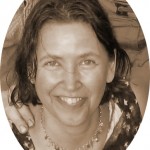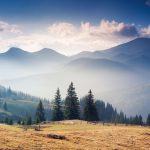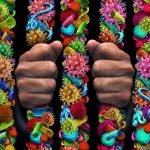The Tyranny of the Medical Trusts
Sussanna Czeranko, ND
The American Medical Association is a powerful trust, and the more vicious because fortified by laws. This [is] clearly class legislation, for none of the numerous other systems of healing and treatment of disease, nor any other calling or profession enjoys similar privileges.
Adolf Candrian, 1910, p. 617
Voters should be careful whom they support for legislative positions and for city, town and county councils, demanding pledges of the candidates that they will never be party to the enactment of laws, which infringe the rights of all for the benefit of the few . . . . [S]upport only those candidates for office who are friends of medical freedom.
A. A. Erz, 1912, p. 708
Under the guise of a hypocritical pretense of protecting public health from everybody but themselves, a movement that will legislate out of business or into jail every drugless healer in this country.
Benedict Lust, 1926, p. 67
Was the assault by the American Medical Association (AMA) on the NDs in the early 20th century calculated? Very. Were they successful? Very. How did they do it? Read on.
As we intimately know today, health has been turned into an expensive commodity. If you do not have health insurance and you live in America, getting sick can at the least be very expensive and, more often than not, financially calamitous. A mild heart attack will cost about $75,000 for a short hospital stay complete with a medley of medical interventions. Amid such abundance, how is it that so many people are denied the simple basic human right of secured healthcare? The answer to this question is complicated. It all began with the medical trusts.
The Medical Trusts
The medical trusts was a colloquial term used by drugless therapists and others to characterize the early AMA. “On May 5, 1847, 250 physicians representing many of these medical societies and some medical schools met in Philadelphia to establish a national medical society, the American Medical Association” (Weiss and Lonnquist, 1996, p. 28). The primary goal of this collaboration was to create financial security for its members. An early ND speculated that the “old school” physicians “fear that the new rational methods [of the NDs] will become popular and so injure their own practice and deprive them of a means of livelihood and also put a scar on the ‘honor of the profession’” (Clauson, 1910, p. 514). The medical trusts recognized that the “competition from homeopaths and other alternative healers was limiting financial success for physicians and reducing pride in the field” (Weiss and Lonnquist, 1996, p. 28). That the medical trusts evolved into the “largest and most dangerous trust that ever cursed a nation” (Robinson, 1908, p. 89) is the focus of this month’s article.
Over the subsequent several decades after its establishment, members of the AMA systematically infiltrated all strata of political influence, state and federal, with the objective of gaining the power to achieve “a monopoly of the healing art” (Macfadden, 1926, p. 110). The MD turned politician. The “regulars” became “especially active in politics, and captured as many public offices as possible” (Erz, 1912, p. 707). To secure their monopoly, “They have a legislative committee to lobby their infamous trust bills through all the law-making bodies” (Robinson, 1908, p. 89).
Pondering the rise of the regulars to political power and the consequent autocratic powers of the medical trusts, an outraged physician of the period, J. T. Robinson, MD, declared in 1908:
The great masses of the people of a once free and glorious republic have become the fawning, cringing slaves of their dictators, and masters; they will hug the limbs and kiss the hand and lick the faces of these politico-medical oligarchs.
By the turn of the 20th century, these politicomedical oligarchs were well on their way to becoming the only show in town. By the beginning of World War II, they were positioned to determine the future of healthcare in the United States forever.
The targets of these politicomedical oligarchs were described in an article published in The Ophthalmologist and reprinted in The Naturopath and the Herald of Health in 1905. Ironically, this article outlined the AMA’s code of ethics at the same time that it communicated a strategy to suppress the naturopathic profession, among others.
Certain people, who are otherwise good citizens have taken up mechanical methods of ascertaining causes of human ills and in a few months learned how to relieve many of what we have believed to be incurable chronic ills. They call themselves Neurologists, Ophthalmologists, Hydropaths, N.Ds., Naturopaths, Hygienists, Osteopaths, etc. These are the most dangerous classes that have arisen and must be suppressed, but in doing this, public sentiment must be first arrayed against them, hence if one of them has any social or political or financial standing let him alone, until we shall have suppressed those of his class who are not so fortunately situated; then we can go after the strongest. (1905, Who are the quacks?, p. 62)
The Great Trade of 1910
A significant year in this struggle was 1910. Not only was the infamous Flexner Report published by the Carnegie Foundation for the Advancement of Teaching in April of that year, but also by this time the AMA had established the only national standards for accrediting medical schools under the auspices of the Council on Medical Education (CME):
In 1910, the states and the federal government made a deal with the AMA. In return for providing the best and most efficient health care system, the states and the federal government gave the CME a monopoly over the production and licensing of physicians, including the power to establish standards for medical schools. (Weiss and Lonnquist, 1996, p. 29)
Known as the Great Trade of 1910, essentially the medical trusts had exclusivity to control and determine the face of the medical profession. The fate of the NDs was sealed.
Exclusive Right to Treat the Sick
In that same year, Dr. L. Blumer of Hartford, Connecticut, in an article in The Naturopath and the Herald of Health raised questions about the scope of power exercised by MDs. He wrote:
[A]re they not as a class given special privileges, special monopoly to control the entire healing art and to prosecute any one who dares to step forward claiming he has a better way, a new way, a safer way, instead of taking chances with guess work in prescribing poisons, and taking the chances on the lives of human beings? (Blumer, 1910, p. 199)The early NDs were quickly overwhelmed by the pernicious legislative efforts of the early MDs in their pursuit by nefarious designs of dominion over medical care.
An address by an excongressman at the time, however, indicates how this conspiracy was accumulating into a form of medical tyranny:
This campaign for restrictive legislation is another manifestation of the ever widening, vicious effects, which inevitably follow social injustices. Instead of demanding the repeal of laws that violate their equal rights to equality of opportunity, they strike blindly at those who, endowed with the same rights, are in other ways, and through other methods, practicing the healing art. (Baker, 1912, p. 514)
Three years later, a report of the U.S. Bureau of Education on Medical Education was crafted by the Council of Medical Education of the AMA. Significantly, there was no mention of any of the various schools of drugless medicine (Fritz, 1915, p. 640). It is not surprising that the NDs would take an oppositional stance when faced with such harassment and eventual obliteration.
Numerous articles and editorials during this period emphasized the objections made by the NDs against the medical trusts. The following three recurrent issues found expression in print, during conferences, and at numerous hearings and other confrontations involving the medical trusts: the persecution of naturopathic practice, fitness of the drug therapy, and the freedom to choose.
One physician asked, “Why is it that the old school doctors are trying to annihilate the newer schools?” (Clauson, 1910, p. 514). The literature demonstrates that initially it was difficult for members of the nature cure movement to comprehend why allegations were increasingly made about “dangerous elements” of their medical practice. In their view, the practitioners were simply following the laws of nature, and their apothecaries and therapies were devoid of poisons, consisting rather of plants, water, air, sunshine, and earth. In describing naturopathy at the time, Dr. Carl Schultz of the Naturopathic Institute in Los Angeles, California, wrote, “Naturopathy teaches the people how to keep well and how to raise healthy children and by that a healthy Nation” (1905, p. 217). The methods used by the NDs arose from the nature cure movement: “The doctor may prescribe, but nature alone can cure” (Candrian, 1910, p. 616).
It was not lost on the early NDs that the use of drugs by the regular physicians had even been criticized by members of their own guild. Dr. Oliver Wendell Holmes, a distinguished physician and a professor at Harvard University (Cambridge, Massachusetts), was thus described:
[He] was honest and bold enough in one of his addresses before the Massachusetts Medical Society to say: ‘I firmly believe that if the whole Material Medica [sic] could be sunk to the bottom of the sea, it would be all the better for mankind, and all the worse for the fishes.’ (Blumer, 1910, p. 205)
The NDs argued that the “drug poisons and vaccination produce more disease and send more people to a premature death than the diseases themselves” (Blumer, 1910, p. 199).
Despite their protestations, the NDs found themselves facing an adversary “posing entirely as the benefactor of suffering humanity” (Zurmuhlen, 1912, p. 609) in a political and healthcare climate in which the medical trusts insisted on having laws in place “for the purpose of protecting the public health against incompetent medical practitioners” (Macfadden, 1929, p. 42). Insinuating themselves in civil society as the representatives of official medicine, the so-called regulars proclaimed their privilege in the name of public safety. There was much propaganda to sway the public into their arms: “[Naturopathy] is a medical cesspool with legislation planned to give opportunity to every form of healing that departs from regular medicine” (Fishbein, 1927, p. 52).
Who Is the Quack?
To undermine the naturopathic profession and to prejudice the public against its legitimate presence in the healthcare landscape of the time, the term quack was applied to the NDs. The fight was vicious with the medical trusts. The voice of Benedict Lust in defending the NDs was prolific. He countered: “There is nothing irrational, no smacking of quackery, in Naturopathy or nature cure. It covers all there is to the prevention and cure of disease according to natural law” (Lust, 1934, p. 333). He had earlier written: “When every individual in the healing art, not belonging to the allopathic profession is classed as a quack, regardless of his skill and achievements in the healing of his patients, we distinctly and radically disagree with him” (Lust, 1926, p. 109).What the NDs of the time knew was that the drugs used by the regulars were dangerous. They documented and challenged, for example, the habitual use of calomel (a mercury derivative that mutilated) for ailments, such as constipation or croup in children, reporting not only its commonplace presence in the repertoire of the MDs but also its danger to patients (Hilf, 1915, p. 554). The NDs asked a question of their own: who are the quacks in such a scenario?
The reach of the AMA was extensive and unrelenting, so much so that the medical trusts eventually gained the power to determine who could practice and who could not: “Medical laws stand for fencing in of the healing profession for one school only. Thus every citizen is denied the right to select the physician of his own choice” (Erz, 1912, p. 708). It was said that the medical trusts:
[W]ould create a monopoly more odious that was ever before conceived, one which would touch and control the life of the people at thousand points of contact and—the most audacious feature of all—would impose the cost of its own support upon the country to the tune of hundreds of millions of dollars every year. (Candrian, 1910, p. 617)The allopathic profession, in the form of the AMA, soon garnered the legal support to silence and eradicate any medical practitioner whom they desired.
And silenced they were. The early NDs affected by these AMA activities can be summarized by Benedict Lust’s experience as an early ND: “Although I have been arrested sixteen times by the New York County Medical Trust, and I have been arrested three times by the Federal Government, I have never been fined” (1934, p. 296). Despite his never having been convicted, Lust eventually paid thousands of dollars of fines for himself and on behalf of many of his less solvent colleagues. Accounts of thousands of arrests of other NDs dominated the early journals. Many NDs were “robbed, persecuted, prosecuted, jailed, handcuffed and stigmatized in every conceivable manner possible by the hyenas and serpents of the American Medical Association” (Robinson, 1908, p. 91). By occupying political offices, the medical trust had at its disposal the legal armor of policing and incriminating all nonmembers for free. The proclamation in many legal jurisdictions that illegal practice of medicine by anyone other than the regulars “reliev[ed] the Medical Trust of the expenses connected with securing evidence and prosecuting these cases” (Lust, 1926, p. 68). The central question of the time then became who has the right to be a physician, a healer?
Who Shall and Who Shall Not Heal?
In the tumultuous year of 1910, W. W. Flower wrote:
Do you know that there are five bills before the present congress which, if passed, could be so used, and concealed purpose of which is to give such powers to a national department or bureau or ‘officer’ of health . . . . Do you know that the terms of all of bills are so subtle that such bureau or department could at any time take action according to its interests or prejudices without specific legislation while the moral effect would be to commit the United States Government to the establishment of a system of medicine, denying to the people the right to determine for themselves the kind of medical treatment they shall employ? (pp. 485-486)
Bernarr Macfadden continued in 1926:
The object of this bill is to crush drugless healing. The allopaths are planning to eliminate the men who are advocating methods different from their own. The allopaths want a monopoly of the healing art, and this bill will help them to suppress all knowledge in reference thereto. (p. 110)
The Webb-Loomis Medical Practice Act of 1926
With each law passed, the NDs found themselves in an increasingly precarious position as a profession. Their efforts to gain a foothold in medicine eroded slowly and surely. On May 17, 1926, the Webb-Loomis Medical Practice Act was passed by the medical society of New York in its efforts to completely squash the “irregulars.” The legislation meant that “all drugless practitioners who were rendering service to the public without a state license could be put out of business.” This law “attracted more nation-wide attention and was the occasion for more intense discussion than perhaps any other bill introduced in the Legislature that year” (Anderson, 1930, p. 226). How effective were the medical trusts? Indeed, very effective.
The insidious remarks of one judge, commenting on this bill, were that “if a man gave a drink of water to a fainting woman he would be guilty of practicing medicine without a license, and subject to fine and imprisonment” (Macfadden, 1929, p. 42). Many contemporary NDs continue to have similar experiences. In 1999, while practicing in a Canadian province without licensure for NDs, I was visited by a representative from the local college of physicians and surgeons, instructing me that I would be charged with practicing medicine without a license “if I merely prescribed a patient to drink water.”
We witness today not only the dominance of the orthodox biomedicine professions but also their piracy of naturopathic modalities. Acupuncture taught in short weekend courses enables an allopath to practice dry needling with their patients. The rigor of training is short, but the MD title is the unassailable framework that permits this cherry picking of modalities whose clinical content, philosophical underpinnings, and effectiveness are predicated on much more substantial training and supervision. A hundred years ago, when their own practices were not working, the old school was quick to adopt practices used by the NDs under the guise of “modern medicine.” The following quotation illustrates the opportunism by the contradiction implied in the legitimate therapeutic practice or method used by one group, such as the regulars, being condemned as dangerous quackery when used by the NDs:
When a new natural method of healing springs up, it is ridiculed by the ‘regulars’ but as soon as laymen begin to believe in this same method and demand its application, the medics at once seize upon it, transplant it to their own soil; proclaim it as their own ‘new discovery’ and proceed to practice it without preparation in a school which teaches natural methods. They seem to think that ‘natural things’ are so simple as to be acquired without any special training, when as a matter of fact our system is quite complicated. (Clauson, 1910, p. 514)
In the view of some of our forebears, access to and control of hospitals became not only the last straw but also a clear indication of the pervasive and unrelenting quest of the allopathic profession to dominate the medical terrain in America:
The drugless organizations introduced the Hospital Bill in the Washington Senate and House . . . . [o]pening the hospitals as public institutions to the licensed physicians of all schools and giving the public a chance to choose their own doctors rather than having to submit to the dictates of the medical association. (Lust, 1930, p. 67)
The NDs argued that “the people build the hospitals, free them from taxation and then the medical trust steps in and proceeds to appropriate them to their own uses and to dictate to the public who shall be admitted to practice in them” (Lust, 1930, p. 66). As Robinson had prophesized, “We cannot tell what the world has lost by this infamous system of oppression and suppression” (1908, p. 90).
This period in the history of naturopathic medicine was bruising and painful. However, Dr. Carl Schultz captures the indomitable spirit of the profession:
Whatever you do, the time will come when Naturopathy will rule in the whole world, not by force of Police or penal laws, but by virtue of its incomparable results in leading humanity to wisdom, health and longevity and to the pinnacle of happiness. (1905, p. 219)
Sussanna Czeranko, ND is a licensed naturopath in Ontario and Oregon. She is currently a faculty member in the Advancement Department at NCNM, conducting historical research in its rare books room. She is applying these studies to the creation and delivery of curriculum featuring Nature Cure, including Balneotherapy and Buteyko breathing. She is currently planning another of her annual, educational Balneotherapy and Spa trips to Eastern Europe and welcomes interested doctors to accompany her.
References
Unknown author, (1905). Who are the Quacks? Naturopath and Herald of Health, Benedict Lust Publishing, New York, Vol VI, #3, pp 61-65. This article was a reprint from the The Ophtalomologist.
Anderson HB (1930). Who Are the Quacks? Nature’s Path, Benedict Lust Publishing, New York, Vol XXXV, #8, pp 226-227.
Baker R (1912). Fighting the Doctor-Drug-Trust, The Naturopath and the Herald of Health, Benedict Lust Publishing, New York, Vol. XVII, # 8, pp 513-515.
Blumer, L (1910). The Revolution in Medical Practice, The Naturopath and the Herald of Health, Benedict Lust Publishing, New York, Vol XV, #4, pp 195-210.
Candrian, A (1910). The Editor as His Own Doctor, The Naturopath and the Herald of Health, Benedict Lust Publishing, New York, Vol XV, #10, pp 615-618.
Clauson, JA (1910). The Dawn of A New Era, A Farewell Address to American School of Naturopathy, The Naturopath and the Herald of Health, Benedict Lust Publishing, New York, Vol XV, #10, pp 514-516.
Erz, AA (1912). Friends of Medical Freedom and Voters, Attention! The Naturopath and the Herald of Health, Benedict Lust Publishing, New York, Vol XVII, #11, pp 707-709.
Fishbein, M (1927). The New Medical Follies, Boni and Liverlight Publishing, New York, pp 235.
Flower, BO (1910). Do You Want the ‘Doctors’ Trust’ To Be Able To Force Its Opinions on You? The Naturopath and the Herald of Health, Benedict Lust Publishing, New York, Vol XV, #8, pp 485-486.
Fritz, WW (1915). The Medical Trust Monopolizing the Federal Bureaus and Healing Arts, The Naturopath and the Herald of Health, Benedict Lust Publishing, New York, Vol XX, #10, p 640.
Hilf, SB (1915). Who is the Quack? The Naturopath and the Herald of Health, Benedict Lust Publishing, New York, Vol XX, #9, p 554.
Lust, B (1926). Medical Tyranny, Nature’s Path, Benedict Lust Publishing, New York, Vol II, # 2, pp 67-68.
Lust, B (1930). The Medical Trust, An Observation of its Methods, Nature’s Path, Benedict Lust Publishing, New York, Vol XXXV, #3, pp 66-67, 80.
Lust, B (1934). Medical Liberty Versus Unconstitutional Health Laws, Invisible Government and Self-Assumed Authority by the Medical Trust, Naturopath and Herald of Health, Benedict Lust Publishing, New York, Vol XXXIX, #10, pp 296-298.
Lust, B (1934). Medical Liberty Versus Unconstitutional Health Laws, Invisible Government and Self-Assumed Authority by the Medical Trust, Naturopath and Herald of Health, Benedict Lust Publishing, New York, Vol XXXIX, #11, pp 332-334, 341-342, 351.
Macfadden, B (1926). What is Liberty? Who are the Quacks? Naturopath and Herald of Health, Benedict Lust Publishing, New York, Vol XXXI, #3, pp 109-112.
Macfadden, B (1929). Medical Tyranny in New York, Nature’s Path, Benedict Lust Publishing, New York, Vol XXXIII, # 2, pp 42.
Robinson, JT (1908). The Medical Trust in the United States, The Naturopath and the Herald of Health, Benedict Lust Publishing, New York, Vol IX, #3, pp 89- 92.
Schultz C (1905). Naturopathy, what it is, What it does, and Why it is Opposed by the Medical Trust. The Naturopath and the Herald of Health, Benedict Lust Publishing, Vol VI, #8, pp 216-219.
Weiss, GL, Lonnquist, LE (1996). The Sociology of Health, Healing, and Illness, Prentice-Hall Inc., New Jersey, pp. 397.
Zurmuhlen C (1912). The fight For Medical Freedom Against the Allopathic Trust, The Naturopath and the Herald of Health, Benedict Lust Publishing, New York, Vol XVII, #9, p 609.











